
Startup Archive
Archiving the world's best startup advice for future generations of founders
—
Full Archive 👇
Recent Posts
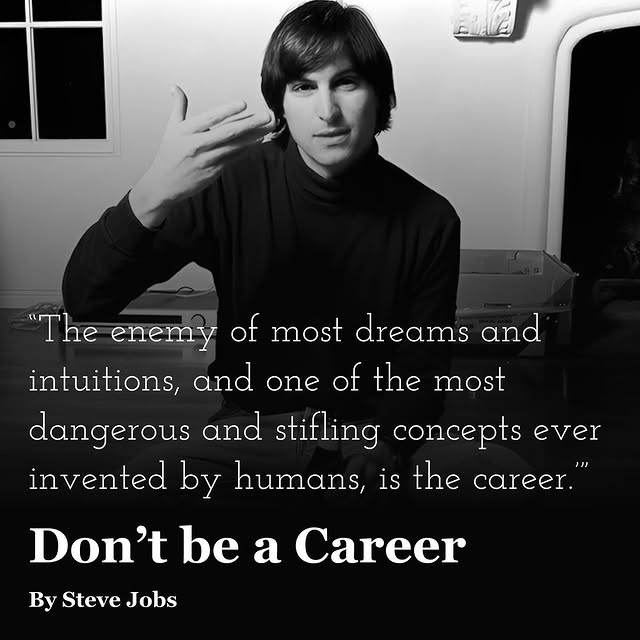
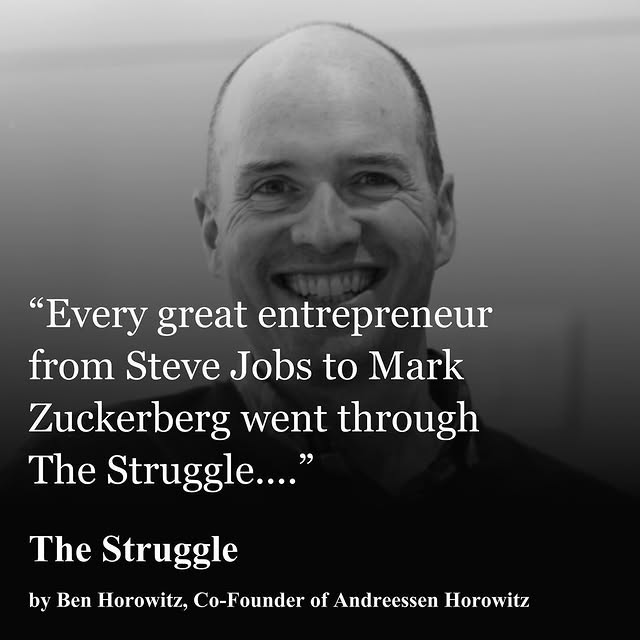
Ben Horowitz is the cofounder and general partner of Andreessen Horowitz. This is an excerpt from his book The Hard Thing About Hard Things. Read the full essay at founderstribune.org.
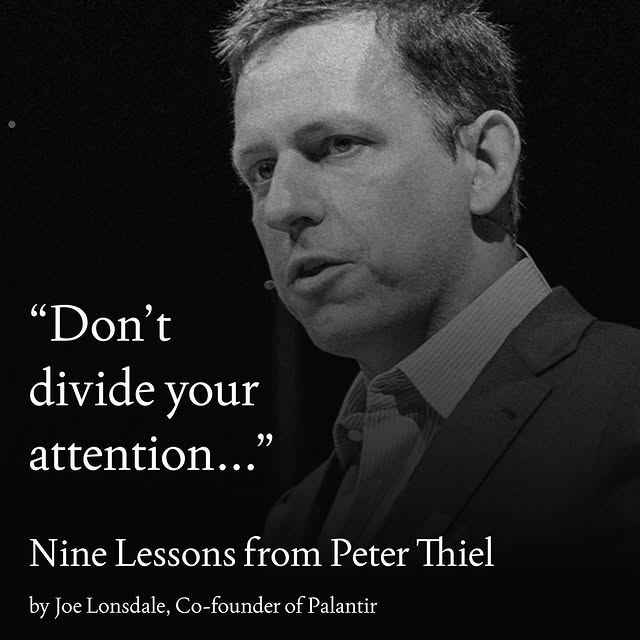
Joe Lonsdale is a co-founder of Palantir and 8VC. These lessons summarize what Joe learned from working over many years with Peter Thiel, a chairman and founder of Palantir. This is an abridged version of Joe’s lessons from 2010. For the full essay and more essays like this, subscribe to the free newsletter at founderstribune.org
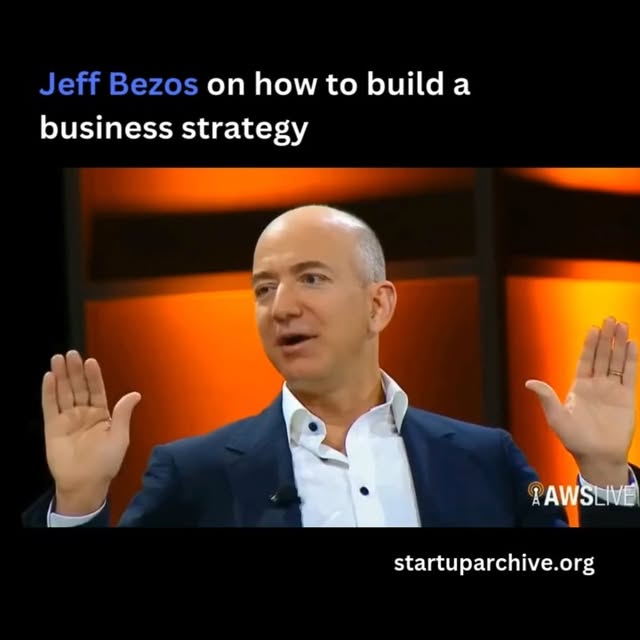
“I very frequently get the question: ‘What’s going to change in the next 10 years?” And that is an interesting question… But I almost never get the question: ‘What’s not going to change in the next 10 years?’ And I submit to you that that second question is actually the more important of the two.” Jeff argues: “You can build a business strategy around the things that are stable in time. In our retail business, we know that customers want low prices, and I know that’s going to be true 10 years from now. They want fast delivery. They want vast selection. It’s impossible to imagine a future 10 years from now where a customer comes up and says, ‘Jeff I love Amazon, I just wish the prices were a little higher.’ Or, ‘I love Amazon, I just wish you’d deliver a little slower.’ Impossible. And so we know the energy we put into these things today will still be paying dividends for our customers 10 years from now.” He gives AWS as another example. It’s impossible to imagine AWS customers asking for a less reliable or more expensive service. ”When you have something that you know is true, even over the long term, you can afford to put a lot of energy into it… The big ideas in business are often very obvious, but it’s very hard to maintain a firm grasp of the obvious at all times. But if you can do that and continue to spin up those flywheels and put energy into those things, over time, you build a better service for your customers on the things that genuinely matter to them.” Video source: @amazonwebservices (2012) --- Want even more startup insights from the world's best founders? Join the 10,000+ founders who read the free newsletter at startuparchive.org
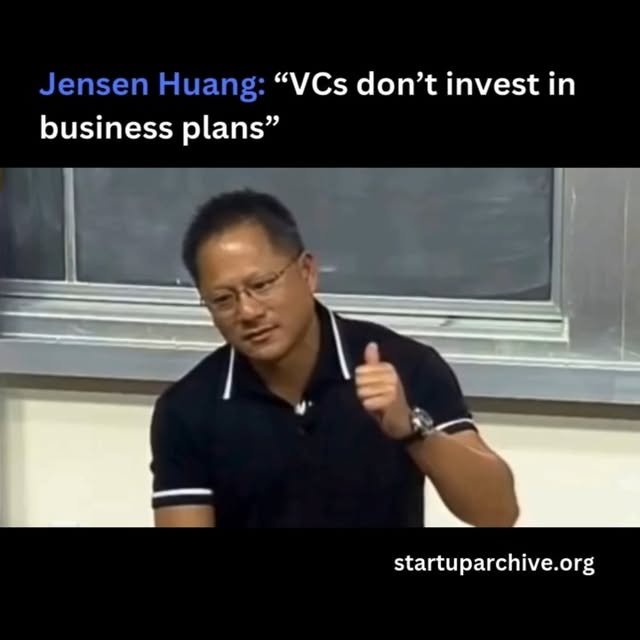
When asked for advice on business plans and raising venture capital, Jensen tells the student audience at Stanford: “VCs don’t invest in business plans… They invest in great people. And so the question is: do they trust you? Your reputation matters. Your history matters.” He explains that a one of the key reasons Sequoia wrote the initial check into NVIDIA was because he had done great work with Andy Bechtolsheim, the founder of Sun. Jensen also argues that you need to have a vision that’s “sufficiently large to invest in.” Because of the nature of the businesses VCs invest in, the odds of success are rather low. “If they need to put in $10 million and the market is only $20 million, they’ll never get that $10 million back with a reasonable return.” But market size is secondary to people: “You might have to reinvent yourself over time, and if you want to reinvent yourself, you need to have great people. That’s why great people are so important.” Video source: @officialstanfordonline (2011) --- Want even more startup insights from the world's best founders? Join the 10,000+ founders who read the free newsletter at startuparchive.org
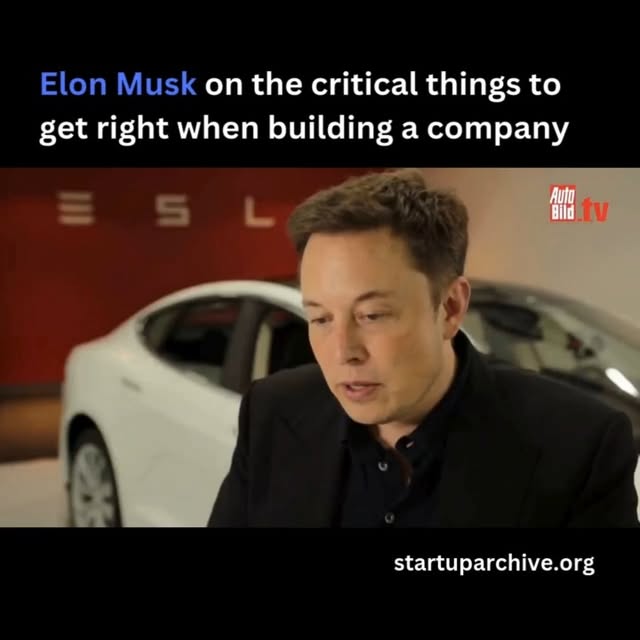
“The ability to attract and motivate great people is critical to the success of a company because a company is just a group of people that are assembled to create a product or service. That’s the purpose of a company. People sometimes forget this elementary truth. If you’re able to get great people to join the company, work together towards a common goal, and have a relentless sense of perfection about that goal, then you will end up with a great product. And if you have a great product, lots of people will buy it, and then the company will be successful.” He jokes: “It’s pretty straightforward, really.” Video source: @autobildde (2014) --- Want even more startup insights from the world's best founders? Join the 10,000+ founders who read the free newsletter at startuparchive.org
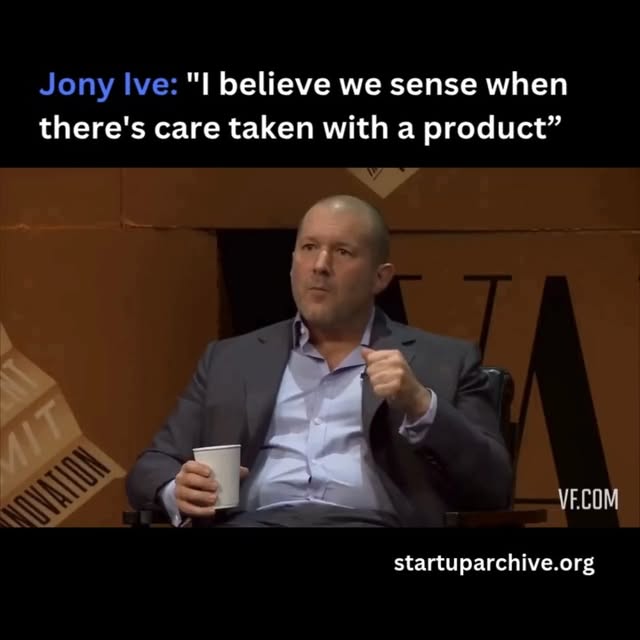
In the clip below, Jony shares that one of the things he has come to feel really strongly is that customers can sense when care has been taken with a product: “I can’t articulate why, but I believe we sense when there’s been care taken with a product. Just in the same way we sense carelessness.” Jony believes that most of our manufactured environment today sadly testifies to a degree of carelessness: “It testifies to: get it built fast, make it cheap, make it look different. There’s just that sort of carelessness. And I just think it’s one of the things that we can strive to do for humanity, and it’s a way that we can serve: is to take care.” This philosophy may have been instilled by Steve Jobs. In Walter Isaacson’s biography of Jobs, there’s a story of the time Jobs insisted that every element of the Macintosh computer be beautiful—down to the circuit boards inside: “Look at the memory chips. That’s ugly. The lines are too close together.” When the computer was finally perfected, Jobs had the engineers’ names engraved inside each one. “Real artists sign their work,” he told them. Isaacson comments: “No one would ever see them, but the members of the team knew that their signatures were inside, just as they knew that the circuit board was laid out as elegantly as possible.” Video source: @vanityfair (2014) --- Want even more startup insights from the world's best founders? Join the 10,000+ founders who read the free newsletter at startuparchive.org
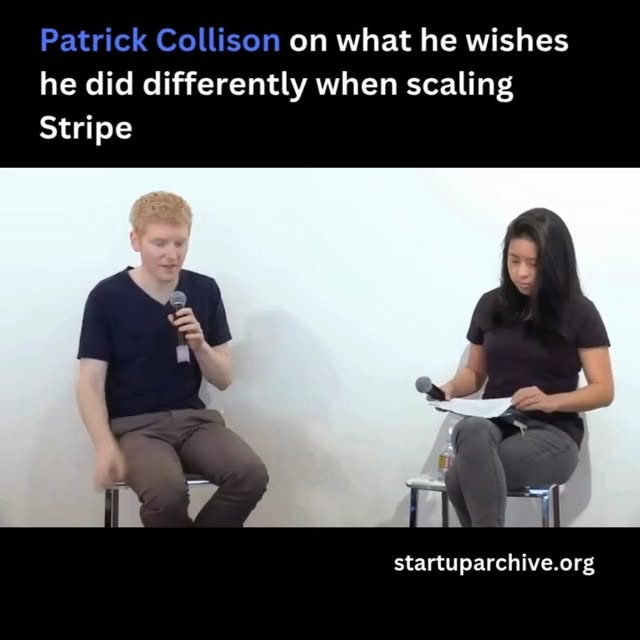
“I think one of the most pernicious mental models you can have is that you are on some growth curve… I think a much better mental model to have is that you’re serving some market, and then there’s the percentage of the market that you’re serving. And whatever percentage you are not serving, you just haven’t built the go-to-market functions and organization that’s brought the product to those market segments.” In the early days of Stripe, they assumed they were on some growth curve, but Patrick believes they could’ve accelerated their growth by viewing growth as a function of their go-to-market apparatus: “What we did not do, but what I wish we did, is six months after launch, we should’ve mapped out the concentric circles of our market.” As he suggests, Stripe should’ve started with very early stage startups then mapped out the larger set of all technical startups - not necessarily very early stage. Then continue this process in successive increments until they got to all companies handling online payments. Each step along the way, figuring out the size of each market, the fraction Stripe was currently serving, what it would take to serve more, and so on. And then work backwards from there: “What would the organization look like that was serving the entire market? Let’s just start building that organization, because the growth curve is under my control. Of course, it’s not 100% under your control, but I think it’s much more under your control than people tend to think.” Video source: @ycombinator (2018) --- Want even more startup insights from the world's best founders? Join the 10,000+ founders who read the free newsletter at startuparchive.org
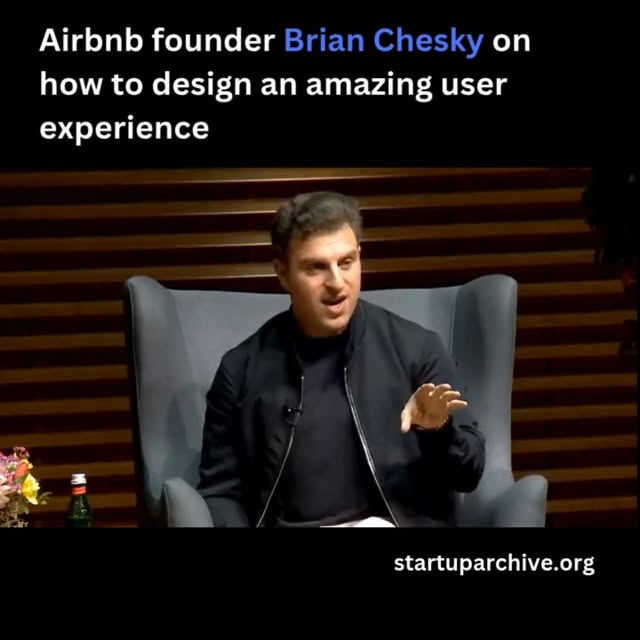
“How do you make something for a million people? I don’t know where to start. But if you pick one person, study them, and take their journey, you can actually build something really personal. You can design something and keep iterating until they love it. Don’t stop improving it until that person loves it, and you’re not allowed to move to the second person until the first person loves it. Then you get the second person and keep iterating until they love it. And so on.” As Brian argues, designing the perfect experience for one person is a much easier place to start than trying to design something for a million people. You can figure out how to scale it later. “If you can design something really amazing using the hand-crafted part of your brain, then you can reverse-engineer how to industrialize this millions of times over. And what happens is people love your product and they tell everyone else about your product.” When people truly love your service, they become your marketing department. But counterintuitively, the biggest and best products seem to mostly get started by solving a very specific problem for a very specific user. Video source: @stanfordgsb (2023) --- Want even more startup insights from the world's best founders? Join the 10,000+ founders who read the free newsletter at startuparchive.org
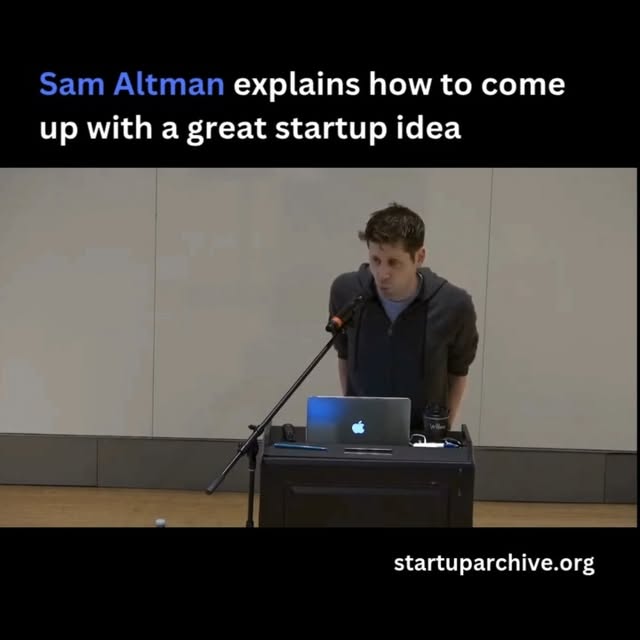
“Wait to have a good idea before you start a startup. If you start a startup without a good idea… you’ll be under pressure to make something up and it won’t work that well. The very best startups are all started because someone believes so passionately in an idea and they believe that a startup is the best way to make that happen.” As Sam explains in the clip below, the hard thing about good ideas is they require original thought. Most people just copy other people’s thoughts, but it’s usually disastrous if you try to copy someone else’s idea. For example, thousands of social media and photo sharing apps were started after Facebook and Instagram, but very few went anywhere. You want to do something that’s new and different. A good way to come up with startup ideas is noticing problems in your own life: “It’s not true that all successful startups are started to solve a problem that the founders have themselves, but it’s a very high percentage. If you go back and think about the transformational companies, most of them start with someone solving their own problem.” Another thing you notice if you go back and look at all the really successful companies is that many of them were early to a massive technology wave. Sam believes these “Great Waves” are why great companies tend to cluster in time (e.g. Amazon and Google with the Internet wave; Uber, Airbnb, Snapchat, Instagram, WhatsApp with the mobile wave; etc.). “A really good question ask is: What is the wave that’s starting right now?” Sam also wrote an essay on this: Idea Generation. Video source: @uwaterlooeng (2017) --- Want even more startup insights from the world's best founders? Join the 10,000+ founders who read the free newsletter at startuparchive.org
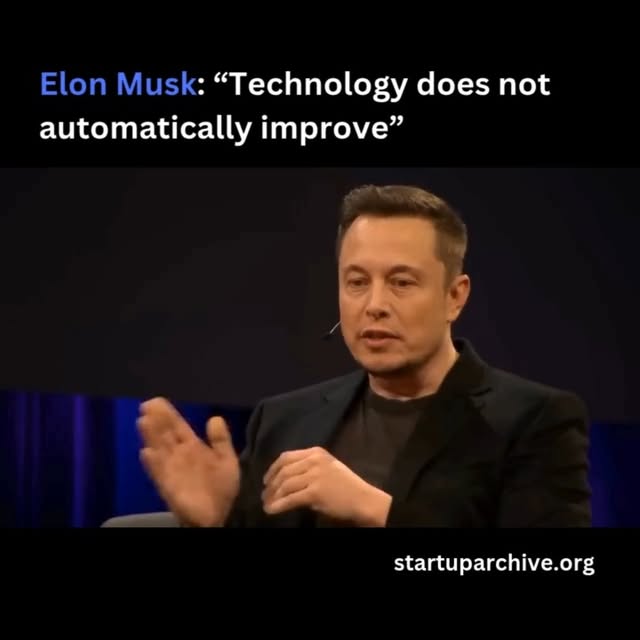
“People are mistaken when they think that technology just automatically improves. It does not automatically improve. It only improves if a lot of people work very hard to make it better. And actually it will I think—by itself—degrade.” Elon continues: “If you look at the progress in space, in 1969 we were able to send somebody to the moon. Then we had the Space Shuttle. The Space Shuttle could only take people to low-earth orbit. Then the Space Shuttle retired and the United States could take no one to orbit.” This is why he believe SpacEx’s mission of making humans a space-faring civilization is so important. It’s not inevitable, and it will require a lot of talented people working really hard to make it happen. “You look at great civilizations like ancient Egypt, and they were able to make the pyramids, and they forgot how to do that. And the Romans, they built these incredible aqueducts. They forgot how to do it.” Video source: @ted (2017) --- Want even more startup insights from the world's best founders? Join the 10,000+ founders who read the free newsletter at startuparchive.org
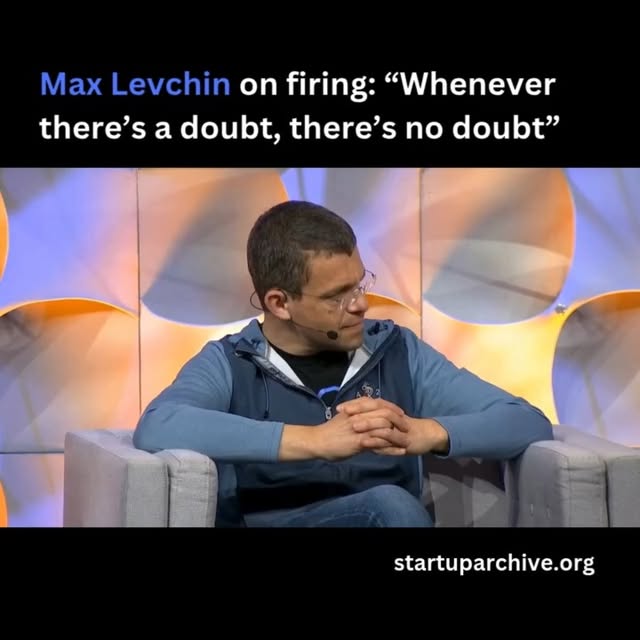
All founders will hire the wrong person at some point. When asked what signals he looks for to realize he’s made a hiring mistake, Max responds with a quote from the movie Ronin: "Whenever there's a doubt, there's no doubt." He explains: “When you're staring at a peer - or if you're the CEO, at a direct report - and you catch yourself thinking, I wonder if you're here next year. This person shouldn't be here today. Unfortunately, it's that binary.” Importantly, this is not the same as hating a person’s guts at times - Max caveats that brilliant people cause that sort of emotional response. Wondering if a person will still be at the company next year is different: ”Boring people, untalented people, not hardworking people, people that don't have the company's best interest in mind, people that are undermining each other. Those people make you think I should have fired you yesterday… No one's ever said I wish I had fired that person later… When there's a doubt, there is no doubt. That's also applicable just about every other situation in life, but in people it's infinitely applicable.” Video source: @khoslaventures (2024) --- Want even more startup insights from the world's best founders? Join the 10,000+ founders who read the free newsletter at startuparchive.org
Similar Influencers

Quantum Computing & Tech ⚛️

Prompted | Intelligenza Artificiale


Growth Forge AI
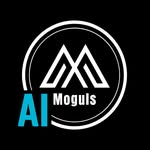
AI Strategies | Business Growth

Awakened Truths

CNET

Quantum | Agência de resultado

Physics Funny

the calculus guy

Rachel Barr | Neuroscientist

TECtalks

𝐂𝐡𝐢𝐩𝐮𝐥𝐚𝐫𝐢𝐭𝐲 ™ | 𝐓𝐞𝐜𝐡𝐧𝐨𝐥𝐨𝐠𝐲 | 𝐘𝐨𝐮𝐫 𝐄𝐝𝐠𝐞

Early Startup Days

Taylor Perkins (Cult Daddy)

Space Cameo

Nobel Prize

SCIENCE & TECHNOLOGY

Sinéad Bovell

Nathan Hodgson

AI Folks

Space | universe | knowledge

Billy Carson

BBC News

David Marsh | Space for Earth

Lucio Arese

The Science Fact
NPR

Qubit Quest
